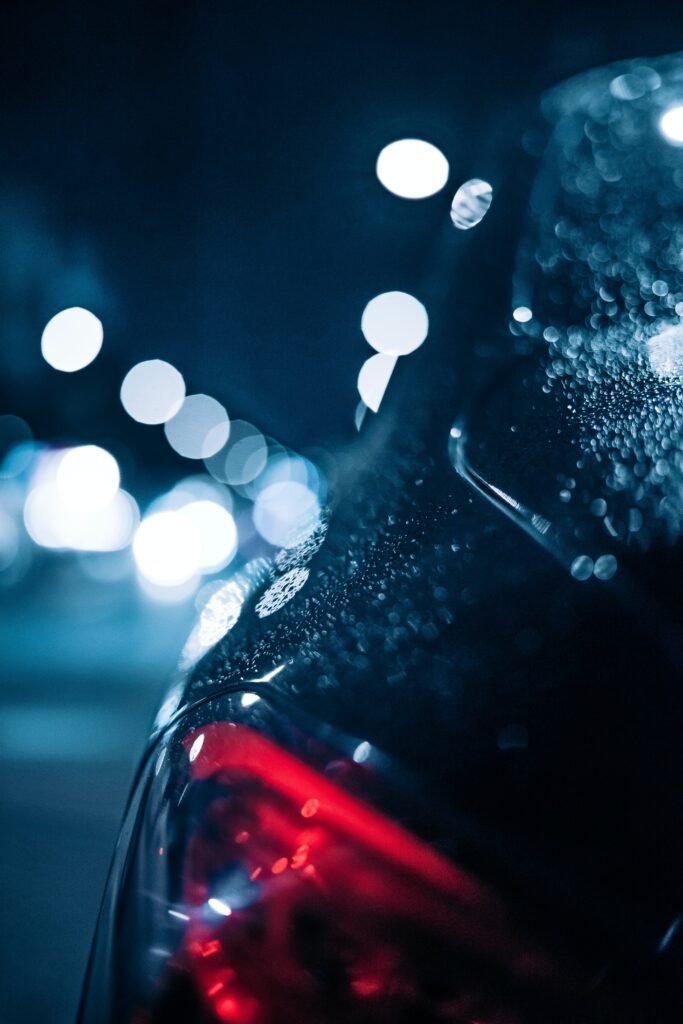In urban areas, the problem of light pollution has become increasingly prevalent, hindering our ability to fully appreciate the night sky. However, fret not, for there are innovative solutions that can help tackle this issue. This article aims to shed light on the numerous strategies and technologies available to combat light pollution in metropolitan areas. From the use of energy-efficient lighting to implementing smart city initiatives, these illuminating solutions have the potential to transform our cities into beacons of sustainability and preserve the beauty of the night for future generations. So, let us explore these illuminating solutions together and pave the way for a brighter, more environmentally conscious future.

This image is property of images.pexels.com.
Awareness and Education
Promote awareness about light pollution
Promoting awareness about light pollution is a crucial first step in addressing this issue in metropolitan areas. Many people are unaware of the extent of light pollution and its detrimental effects on the environment and human health. By disseminating information through various channels, such as social media campaigns, educational programs, and public service announcements, we can reach a wide audience and increase awareness about the importance of reducing light pollution.
Educate the public about the effects of light pollution on environment and health
It is essential to educate the public about the detrimental effects of light pollution on the environment and human health. Excessive artificial lighting disrupts natural ecosystems, affecting wildlife behaviors, migration patterns, and reproduction cycles. Light pollution also has adverse effects on human health, such as disrupting circadian rhythms and sleep patterns, increasing the risk of certain diseases, and negatively impacting overall well-being. By providing accessible and accurate information, we can empower individuals to make informed decisions about their lighting practices.
Foster a sense of responsibility towards mitigating light pollution
Creating a sense of responsibility among individuals and communities is crucial for effectively addressing light pollution. By emphasizing the importance of responsible lighting practices and their impact on the environment and health, we can motivate people to take action. Encouraging behavior changes, such as using energy-efficient lighting, reducing unnecessary lighting, and properly shielding outdoor lights, can significantly contribute to mitigating light pollution. Through education and awareness campaigns, we can foster a collective sense of responsibility and promote sustainable lighting practices.
Regulations and Policies
Implement stricter regulations on outdoor lighting
Implementing stricter regulations on outdoor lighting is an essential step towards reducing light pollution in metropolitan areas. These regulations can include restrictions on the intensity and placement of outdoor lights, as well as requirements for shielding fixtures to minimize light spillover. By setting clear guidelines and enforcing compliance, we can ensure that outdoor lighting is used responsibly and minimize its detrimental effects on the environment and human health.
Promote the use of energy-efficient lighting technologies
Promoting the use of energy-efficient lighting technologies is crucial for mitigating light pollution. Encouraging the adoption of LED lights, which consume significantly less energy compared to traditional lighting sources, can reduce both the environmental impact and energy costs associated with lighting. By providing information about the benefits of energy-efficient lighting and offering incentives for their installation, we can incentivize individuals and businesses to make the switch and contribute to the reduction of light pollution.
Enforce restrictions on excessive lighting and light trespass
Enforcing restrictions on excessive lighting and light trespass is another important aspect of addressing light pollution. Light trespass occurs when artificial light spills beyond its intended area, causing unnecessary illumination and contributing to light pollution. By enforcing regulations that limit the use of excessive lighting and require shielding to prevent light trespass, we can minimize the negative impacts on both the environment and human health. This can be achieved through increased monitoring and enforcement efforts by local authorities.
Smart Lighting Solutions
Utilize smart lighting systems for more efficient illumination
Utilizing smart lighting systems can significantly improve the efficiency of illumination in metropolitan areas. These systems use advanced technologies such as sensors, timers, and communication networks to adapt lighting levels based on occupancy and ambient light conditions. By automatically adjusting lighting intensity and turning off lights when not needed, smart lighting systems can reduce energy consumption and minimize light pollution. Implementing such solutions in public spaces, streets, and buildings can provide effective and sustainable lighting while reducing the impact on the environment.
Install motion sensors and dimmers to reduce unnecessary lighting
Installing motion sensors and dimmers in buildings and outdoor areas can help reduce unnecessary lighting, thereby mitigating light pollution. Motion sensors detect occupancy and activate lighting only when needed, ensuring that lights are not left on unnecessarily. Dimmers, on the other hand, allow users to adjust the brightness of lights according to their requirements, reducing light intensity and energy consumption. By incorporating these technologies into lighting systems, we can achieve significant energy savings and contribute to the reduction of light pollution.
Implement adaptive lighting strategies based on occupancy and ambient light levels
Implementing adaptive lighting strategies that consider occupancy and ambient light levels can be an effective way to reduce light pollution in metropolitan areas. By using sensors and intelligent control systems, lighting can be adjusted in real-time based on the presence of individuals and the existing natural light conditions. This approach ensures that lighting is used only when necessary and that the intensity of the light is appropriate for the specific situation. By optimizing lighting levels to match the actual needs, we can minimize light pollution and achieve a more sustainable and efficient lighting system.
Preserving Dark Areas
Designate and protect dark sky areas within metropolitan regions
Designating and protecting dark sky areas within metropolitan regions is essential for preserving natural darkness and reducing light pollution. These areas are characterized by their minimal artificial lighting and provide valuable opportunities for stargazing, wildlife conservation, and reconnecting with the natural environment. By establishing regulations that restrict outdoor lighting and promote responsible lighting practices in these designated areas, we can ensure their preservation and create opportunities for people to experience the beauty of a truly dark sky.
Control light pollution in sensitive ecological habitats
Controlling light pollution in sensitive ecological habitats is crucial for the preservation of biodiversity and the sustainability of ecosystems. Many species rely on natural light cues for behaviors such as migration, reproduction, and foraging. Excessive artificial lighting can disrupt these patterns, leading to adverse consequences for wildlife populations. By implementing measures to minimize light pollution in and around sensitive habitats, such as nature reserves and protected areas, we can mitigate these negative impacts and safeguard biodiversity.
Balance urban development with the preservation of natural darkness
Balancing urban development with the preservation of natural darkness is a key challenge in addressing light pollution. As cities continue to grow and expand, the demand for artificial lighting increases. However, it is essential to consider the impact of this lighting on the surrounding environment. By incorporating responsible lighting practices into urban planning and development, we can minimize light pollution while still meeting the lighting needs of urban areas. This can include strategies such as strategic placement of lighting fixtures, using shielding to direct light downwards, and utilizing energy-efficient technologies.

This image is property of images.pexels.com.
Community Initiatives
Encourage community involvement in addressing light pollution
Encouraging community involvement is crucial for addressing light pollution in metropolitan areas. By engaging individuals, community groups, and organizations, we can foster a sense of ownership and collective responsibility towards reducing light pollution. Community members can be encouraged to participate in activities such as stargazing events, light pollution monitoring, and education campaigns. By involving the community in these initiatives, we not only raise awareness but also empower individuals to take action and contribute to the overall reduction of light pollution.
Organize community events to raise awareness and promote responsible lighting practices
Organizing community events is an effective way to raise awareness about light pollution and promote responsible lighting practices. By hosting workshops, seminars, and public discussions, we can provide education and information about the impacts of light pollution and the importance of adopting sustainable lighting practices. Additionally, community events such as stargazing parties, nighttime hikes, and photography contests can help foster a connection with the natural environment and inspire individuals to become advocates for reducing light pollution.
Establish partnerships with local organizations and businesses for collective action
Establishing partnerships with local organizations and businesses is crucial for collective action in addressing light pollution. Collaborating with environmental groups, educational institutions, lighting manufacturers, and local government entities can amplify efforts towards reducing light pollution. By leveraging the resources and expertise of these partners, initiatives such as awareness campaigns, research projects, and sustainability programs can be effectively implemented. Through collective action, we can create a united front against light pollution and drive positive change in metropolitan areas.
Lighting Design Guidelines
Develop lighting design guidelines for architects, urban planners, and developers
Developing lighting design guidelines is essential to ensure that architects, urban planners, and developers incorporate responsible lighting practices in their projects. These guidelines can provide recommendations on lighting technology, fixture design, appropriate lighting levels, and lighting controls. By integrating these guidelines into the planning and design stages of construction projects, we can minimize the potential for light pollution and create sustainable and visually appealing lighting solutions that enhance the urban environment.
Promote the use of downward-facing, shielded lighting fixtures
Promoting the use of downward-facing, shielded lighting fixtures is important for reducing light pollution. These fixtures are designed to direct the light downwards, minimizing upward light spillover and glare. By using shielded fixtures, we can ensure that light is focused on the intended area, reducing wasteful and unnecessary illumination. Additionally, shielded fixtures can enhance visual comfort and safety by preventing glare and improving visibility. Through education and incentives, we can encourage the widespread adoption of downward-facing, shielded lighting fixtures in metropolitan areas.
Encourage the integration of lighting into urban design and public spaces
Encouraging the integration of lighting into urban design and public spaces can help create well-lit and visually appealing environments while minimizing light pollution. By incorporating lighting as an integral part of the design process, we can ensure that lighting solutions are carefully planned and thoughtfully integrated into the urban landscape. This can include highlighting architectural features, providing adequate lighting for pedestrians and cyclists, and utilizing dynamic lighting to enhance the overall ambiance. By considering lighting in the early stages of urban design, we can create sustainable and visually appealing environments that minimize light pollution.

This image is property of images.pexels.com.
Citizen Science Projects
Encourage citizen science initiatives to monitor and map light pollution
Encouraging citizen science initiatives to monitor and map light pollution can provide valuable data and raise awareness about the extent of the problem. By involving citizens in collecting data on light pollution levels, we can create comprehensive maps that highlight areas of high light pollution and identify the most affected regions. Citizen science initiatives can involve individuals using simple light sensors or smartphone apps to measure and record light pollution levels. By empowering citizens to actively contribute to the monitoring and mapping efforts, we can create a more accurate understanding of light pollution in metropolitan areas.
Develop smartphone apps and tools for citizen participation in data collection
Developing smartphone apps and tools can enhance citizen participation in data collection efforts to monitor light pollution. By creating user-friendly apps that allow individuals to report light pollution observations and measurements, we can engage a larger number of people in the monitoring process. These apps can also provide educational resources, such as information on responsible lighting practices and tips for reducing light pollution. By utilizing the widespread availability of smartphones, we can harness the power of citizen science to gather valuable data and create a stronger collective impact in addressing light pollution.
Collaborate with scientific institutions for data analysis and research
Collaborating with scientific institutions is crucial for data analysis and research on light pollution. By partnering with universities, research institutions, and scientific experts, we can utilize their expertise in analyzing collected data and conducting further research on the impacts and mitigation strategies of light pollution. These collaborations can lead to the development of evidence-based recommendations and policies, providing a solid foundation for tackling light pollution in metropolitan areas. By combining the efforts of citizen science and scientific institutions, we can gain a comprehensive understanding of the issue and drive effective solutions.
Collaboration with Lighting Industry
Engage with lighting manufacturers to develop innovative and eco-friendly lighting solutions
Engaging with lighting manufacturers is essential for the development of innovative and eco-friendly lighting solutions that can mitigate light pollution. By working closely with the industry, we can encourage the development and production of lighting fixtures that are energy-efficient, have minimal light spillover, and comply with responsible lighting standards. Collaboration can involve providing incentives and support for research and development in sustainable lighting technologies. By fostering this partnership, we can drive the availability and adoption of eco-friendly lighting solutions that contribute to reducing light pollution in metropolitan areas.
Promote the use of lower intensity LED lights with warm color temperatures
Promoting the use of lower intensity LED lights with warm color temperatures can minimize light pollution and its negative effects. LED lights emit less light pollution compared to traditional lighting technologies and can be dimmed to reduce their overall intensity. Choosing warm color temperatures (lower Kelvin values) for outdoor lighting fixtures can also help minimize the disruption to wildlife and preserve the natural nighttime environment. By actively advocating for the use of LED lights with warm color temperatures, we can support the widespread adoption of lighting solutions that prioritize the reduction of light pollution.
Advocate for the reduction of light pollution in the design and production of lighting products
Advocating for the reduction of light pollution should be a key consideration in the design and production of lighting products. By promoting responsible lighting practices and encouraging the development of products that minimize light spillover, glare, and energy consumption, we can drive positive change in the industry. This can include raising awareness among lighting designers, manufacturers, and consumers about the impact of their choices on light pollution. By advocating for environmentally conscious and sustainable lighting design principles, we can ensure that lighting products contribute to the reduction of light pollution in metropolitan areas.
Government Funding and Incentives
Allocate funding for research and implementation of light pollution solutions
Allocating funding for research and implementation of light pollution solutions is vital to support initiatives aimed at tackling this issue. Governments can provide financial support for research projects focused on understanding the impacts of light pollution and developing effective mitigation strategies. Additionally, funding can be allocated for pilot programs and the implementation of sustainable lighting solutions in public spaces. By investing in efforts to address light pollution, governments can demonstrate their commitment to environmental sustainability and promote the development of long-term solutions.
Offer tax incentives for businesses and individuals adopting eco-friendly lighting practices
Offering tax incentives can encourage businesses and individuals to adopt eco-friendly lighting practices that reduce light pollution. Governments can provide tax benefits for the installation of energy-efficient lighting technologies, such as LED lights, and the use of responsible lighting practices. These incentives can help offset the initial costs associated with upgrading lighting systems and motivate entities to prioritize sustainable lighting solutions. By making eco-friendly lighting options financially attractive, governments can facilitate the transition towards more responsible lighting practices in metropolitan areas.
Support community projects through grants and subsidies
Supporting community projects through grants and subsidies is an effective way to foster local initiatives in reducing light pollution. Governments can provide financial support for community-led projects, such as the installation of smart lighting systems, dark sky preservation initiatives, and educational campaigns. By offering grants and subsidies, governments can empower communities to take action and make a positive impact on light pollution. By supporting community projects, governments demonstrate their commitment to environmental stewardship and encourage grassroots efforts to address light pollution at the local level.
International Cooperation
Collaborate with other countries and international organizations to develop global strategies for addressing light pollution
Collaborating with other countries and international organizations is essential to develop global strategies for addressing light pollution. As light pollution knows no borders, a coordinated international effort is necessary to effectively mitigate its impacts. By sharing best practices, research findings, and policy recommendations, countries can learn from each other’s experiences and develop comprehensive strategies tailored to their unique challenges. International organizations can play a crucial role in facilitating these collaborations and fostering dialogue among nations to drive global action against light pollution.
Exchange best practices and knowledge on light pollution mitigation
Exchanging best practices and knowledge on light pollution mitigation is key to developing effective strategies for addressing this issue. Countries can learn from each other’s successes and failures in implementing lighting regulations, promoting responsible lighting practices, and adopting sustainable lighting technologies. By sharing data, research findings, and practical experiences, nations can collaborate to develop comprehensive approaches to reducing light pollution. This exchange of knowledge can help streamline efforts and ensure that the most effective techniques are implemented globally.
Promote the inclusion of light pollution in international environmental agreements
Promoting the inclusion of light pollution in international environmental agreements is crucial to raise awareness and prioritize its mitigation at the global level. Existing international agreements focused on climate change, biodiversity conservation, and sustainable development can be expanded to consider light pollution as a significant environmental issue. By recognizing light pollution as a global concern, countries can commit to taking action by implementing measures to reduce light pollution and sharing best practices. This inclusion can drive international cooperation and ensure that light pollution is addressed holistically in the context of broader environmental efforts.
In conclusion, addressing light pollution in metropolitan areas requires a multifaceted approach that encompasses awareness and education, regulations and policies, smart lighting solutions, preserving dark areas, community initiatives, lighting design guidelines, citizen science projects, collaboration with the lighting industry, government funding and incentives, and international cooperation. By implementing these strategies, we can promote responsible lighting practices, minimize energy consumption, protect the environment, and restore the natural beauty of dark night skies in metropolitan areas.
